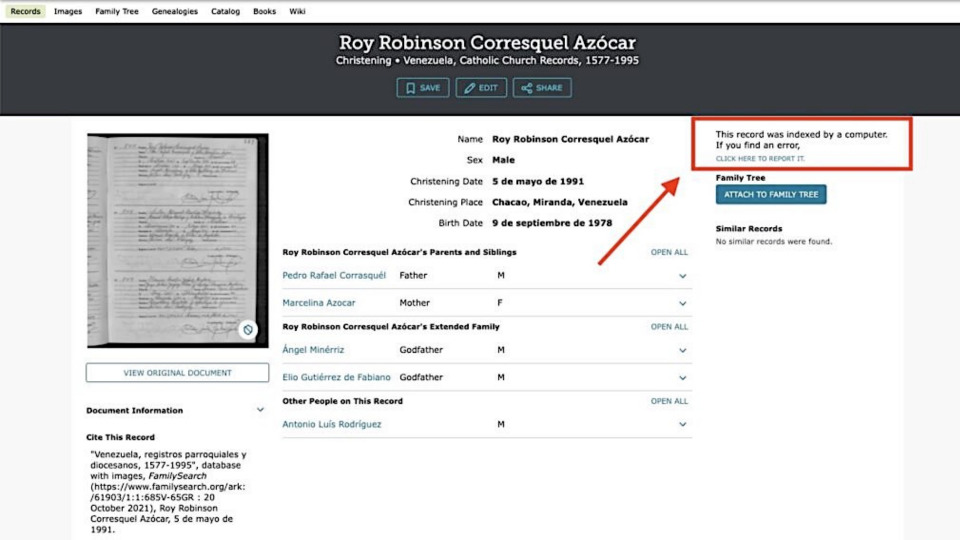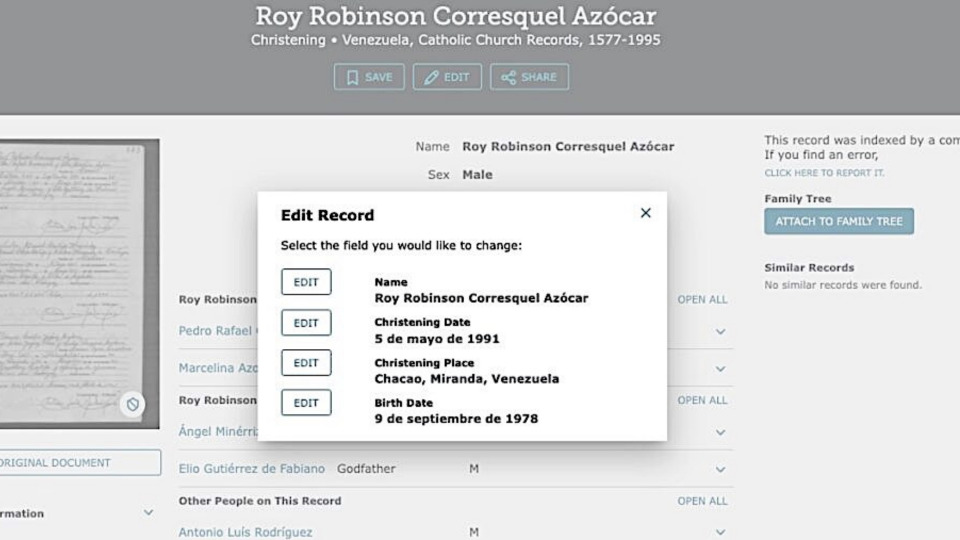In September, FamilySearch announced a milestone 83 years in the making — the completion of digitizing its collection of more than 2.4 million rolls of microfilm.
The digital archive containing information on more than 11.5 billion people represents over 200 countries and principalities and more than 100 languages.

FamilySearch-computer-assisted-indexing
A young woman uses a laptop computer. To help unlock records and expediting their discoverability, FamilySearch is using computer-assisted indexing.© 2021 by Intellectual Reserve, Inc. All rights reserved.While images of these records are available to view online, several records still need to be indexed so FamilySearch users can search for and find them. Many of those languages, however, are difficult for people to index.
One solution FamilySearch is developing is computer-assisted indexing using artificial intelligence.
“What we’re really trying to do is unlock those records so people can actually use them,” said Ty Davies, a FamilySearch portfolio director who oversees the development of records.
“How do we get more records to more people faster? … We need to figure out a way to accelerate so that more people can participate in family history all over the globe. And we think computer-assisted indexing lets us do that,” he said.
Ian James, technical product manager for FamilySearch, emphasized that computer-assisted indexing does not replace human indexers — it augments them. “We want the computers to do what the computers are really good at, so that the people can do the things that only people can do,” he said.
What Is Computer-assisted Indexing?
To explain how computer-assisted indexing works, James first described what indexing is.
For decades, FamilySearch camera operators have been taking images of historical records from archives, museums and government buildings around the world. These images are published on FamilySearch.org and can be viewed online using the Explore Historical Images feature.
That feature, however, can only search groups of images. An image cannot be searched by name or other specific information until it is indexed, he said.
Indexing is a transcription effort in which information on the record is read and typed into fields so it can be searched.
“Up to this time, the only way we’ve been able to do that is with humans, with a volunteer workforce,” said James, also noting the contributions of vendors and other third-parties and partners. “Computer-assisted indexing is a new tool among those options.”
Only 20% of FamilySearch’s online historical records are currently indexed, and FamilySearch hopes computer-assisted indexing can increase that percentage at an accelerated pace.
Davies said in simple terms, computer-assisted indexing is a three-part process:
- The computer figures out what it’s looking at.
- The computer reads the document.
- The computer tries to understand what it’s reading.
“It’s that simple,” Davies said. “The computer says, ‘What is this document? Can I read it? And what does it mean?’”
Augmenting Human Indexers
The artificial intelligence the computer uses is not perfect, and that’s where the people come in.
“We need them to help us correct or improve what is going on with the computer,” Davies said, “so the computer will stand side by side with the indexer to provide a high value record so that people can find their ancestors.”
Humans support computer-assisted indexing in two ways: they teach the computer what to look at and they correct the mistakes the computer makes so it can keep getting better.
“The best way to get involved in helping us is to actually do your family history,” Davies explained. Why? “Because you’ll run into these records that aren’t perfect.”
Records indexed by a computer are labeled with a box in the top right corner that reads “This record was indexed by a computer. If you find an error, click here to report it.”

FamilySearch-computer-assisted-indexing
If a record has been indexed by a computer, it will be identified by a box in the top right corner with an option to report an error. Photo is a screenshot from FamilySearch.org. © 2021 by Intellectual Reserve, Inc. All rights reserved.At the top of each record is also an Edit button that allows the user to correct information. Editing the record or reporting the error helps improve the record for future use.

FamilySearch-computer-assisted-indexing
To edit information on a record that has been indexed, select the Edit button at the top and this screen will appear. Photo is a screenshot from FamilySearch.org. © 2021 by Intellectual Reserve, Inc. All rights reserved.The process of indexing and typing out all the fields can be tedious and frustrating at times, but Davies believes computer-assisted indexing “is going to make it a lot easier and funner for volunteers in the future.”
Davies and James said new tools for editing records and getting involved with computer-assisted indexing are forthcoming. More information is expected to be released at RootsTech Connect 2022.
Why It Matters
While unlocking records and expediting their discoverability for people worldwide is a motivating factor behind computer-assisted indexing, the impact of this technology is especially important for members of The Church of Jesus Christ of Latter-day Saints, Davies said.
Computer-assisted indexing will enable FamilySearch to provide access to the records Latter-day Saints need for temple work, particularly in non-English speaking areas.
Since becoming President of the Church in January 2018, President Russell M. Nelson has announced locations for 83 temples — 55 of which are outside of the United States. Those locations include India, Russia, Cambodia, Hungary, Kiribati, Mozambique and several Latin American countries.
“This is literally a part of the effort to expand temples globally,” Davies said of computer-assisted indexing. “As temples expand throughout the world, we want people to be able to do their family history so they can take their family names to the temple from their country. …
“Computer-assisted indexing, for the first time, is going to start making that possible — that everybody around the globe can take their family names to the temple. And really, that’s the purpose. That’s why we’re doing this.”
To learn more about computer-assisted indexing, watch Davies and James’ RootsTech Connect 2021 presentation “Insights in Archives and Computer-Assisted Indexing” at RootsTech.org.